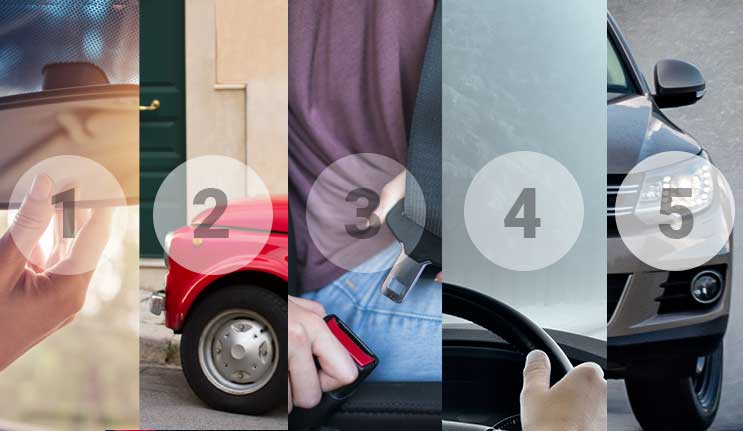Road safety is more important now than ever. With more people driving under the influence of alcohol and engaged in driving distracted, it is no surprise that the number of car accidents is on the rise.
The National Safety Council reported that car accident fatalities topped 40,000 people in 2017, for the second straight year. Texas leads as the state with the most motor vehicle crash fatalities. Houston car accident lawyer, Brian White, reports that the top two factors for fatal car accidents in Texas are, unsurprisingly, speeding or driving under the influence of drugs or alcohol.
For drivers to be more meticulous and careful in their driving, they should review and remember the fundamentals. Many drivers are on the road every day and think that driving is like muscle memory. While some of this is true, it doesn’t mean that drivers should stop thinking about the detailed protocols of driving.
Here are 5 things that all drivers need to remember.
1: Check Your Mirrors and Headrest
Do you share your car with another driver? If so, get into the habit of checking your mirrors and adjusting your headrest and seat before taking off. Forgetting to adjust your mirrors can result in more blind spots and potentially cause accidents.
You should also make sure that your headrest is in the right configuration before you drive. Headrests are designed to limit the amount of whiplash in the event of a rear-end accident. When properly positioned, the headrest should be even with the top of your head and about one inch away from the back of your head.
2: When to Turn Your Wheels
You don’t want to be the person that gets a ticket for forgetting which way to turn their wheels. So here is a quick and easy way to remember which way you should turn them:
- When you park facing uphill, you should turn your wheels away from the curb. Remember this by remembering, “Up, up and away.”
- When you park facing downhill, you should turn your wheels to the curb. Remember this by remembering, “Down, down to the ground.”
3: Wear Your Seatbelt
This one is non-negotiable. People often try to avoid wearing seatbelts or will wear them in a different way. Don’t do this. Seatbelts are designed the way they are to save and protect lives.
It doesn’t matter how short or long your drive is. You should always wear a seat belt properly.
4: How to Drive in Fog
Driving in fog can be very stressful and scary. Here are few tips to remember:
- Don’t use your high beams. You may think that using your high beams will allow you to see more. However, more light will reflect off the fog, making it more difficult for you to see.
- Slow down. Driving recklessly in the fog can and will cause accidents!
- Make sure you stay in your lane. This is true for any time that you are driving, however, it is important to be cognizant of this while you’re driving in dense fog.
5: What to Do When You Hydroplane
There is nothing scarier than hydroplaning during a heavy rainstorm. Many people panic and are not aware of what they should do. Here are a few tips on how to avoid hydroplaning:
- Avoid driving fast in the rain. This sounds obvious but many people think that rain is no excuse to drive slower. However, it is better safe than sorry! Drive with caution.
- Check on your tires. If your tires are a bit worn with inadequate tread, it will increase your chances of hydroplaning.
- Avoid puddles. If it is possible and safe for you to drive around a puddle, do so.
Practice Safe Driving with these essential eLearning courses:
Defensive Driving – Small Vehicles
Speeding Awareness – Small Vehicles
Here are some dos and don’ts when hydroplaning:
- Don’t panic!
- Don’t slam on the brakes.
- Don’t press on the gas.
- Do steer in a straight line.
- Do remain calm and let your car regain contact with the road on its own.
Safe driving will not only save your life, but it can also save many lives. Relearning the fundamentals will strengthen your foundation and allow you to be a better driver. Improve your confidence behind the wheel by studying the fundamentals.
About the Author
Stay safe on the road with these training courses on driving safety:




